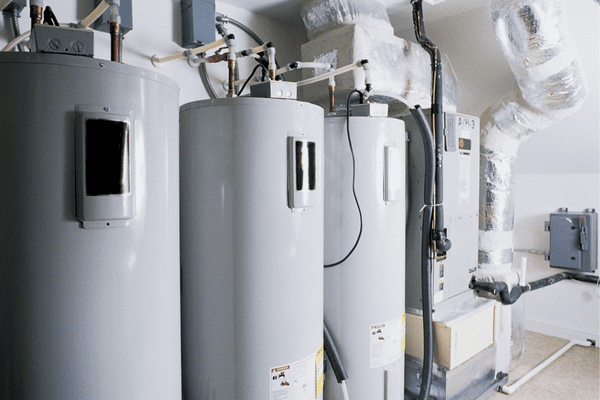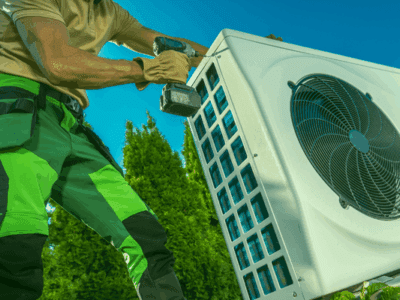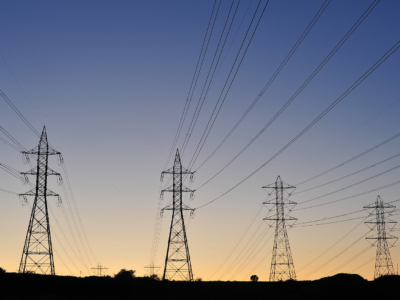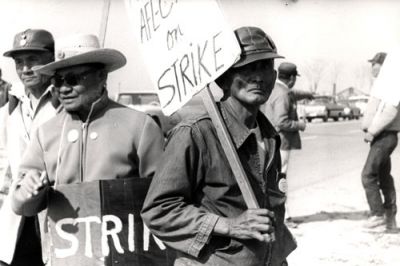These SoCal Clean Air Rules are Being Smeared
Legitimate affordability concerns are being weaponized by the gas lobby and its supporters ahead of an important SCAQMD vote to encourage cleaner appliances.

After years of rule development, Southern California air quality regulators are set to vote tomorrow on a pair of proposals that would reduce harmful pollution from gas furnaces and water heaters. A coordinated campaign by opponents including SoCalGas is painting these relatively moderate rules as a “ban” on gas appliances and an attack on middle-class pocketbooks. Policymakers shouldn’t be swayed by these misleading claims.
At issue are Rules 1111 and 1121. These proposals are key components of the South Coast Air Quality Management District’s strategy to reduce the emission of harmful nitrogen oxides (NOx) and fine particles, which help cause our infamous smog. By reducing air pollution from space and water heaters, the rules would prevent 2,490 premature deaths and 10,200 cases of newly onset asthma over the next 25 years, according to SCAQMD’s socio-economic impact assessment. Notably, the district expects more than $25 billion in savings due to improvements in public health.
The rules would accomplish this by setting gradual zero-emission sales targets for manufacturers, distributors, sellers, and installers of furnace and water heaters and setting modest fees to fund incentive programs. Manufacturers would sell increasing percentages of zero-emission heating appliances in the Los Angeles basin — beginning with 30% in 2027 and ratcheting up to 90% by 2036 — to meet those targets. For gas appliances sold in excess of sales targets, manufacturers would pay surcharges. The SCAQMD Board is set to vote on these rules on Friday, June 6.
Notably, none of this amounts to a ban on gas appliances or a mandate to rip out functioning units. The goal here is to encourage Californians to replace their gas-powered appliances when their current units kick the bucket or if they’re ready to upgrade. That’s important because emissions from home appliances have serious public health and environmental consequences for Californians, contributing to approximately 500 premature deaths every year and hampering California’s efforts to meet state and federal health-based standards for clean air.
Nor would these rules impose costs on society and consumers any greater than we already bear in less visible ways. Pollution has costs too, as advocates who have worked on this issue for nearly two years point out. “Currently, the costs of pollution from gas-burning space and water heating are entirely subsidized by the public through increased health costs, lost school and workdays, and shortened lifespans,” Chris Chavez, deputy policy director of the Coalition for Clean Air, wrote in a June 2 letter to the SCAQMD board. “The fees in the proposed rule amendments are a far cry from the actual costs of gas-burning space and water heaters impose on the public. These fees, however, will help mitigate the emissions from continuing to choose polluting furnaces and water heaters,” wrote Chavez.
But make no mistake, SCAQMD’s proposed rules have been weakened, delayed, and unfairly smeared by fierce opposition. This opposition campaign is chronicled in a recent investigation by Hilary Beaumont for Floodlight and The Guardian, which cites records showing SoCalGas and business allies rallied public officials to slow down the rulemaking process.
It’s not new for fossil fuel interests to oppose tighter air quality standards, but this campaign has cloaked its opposition in surprisingly misleading claims about appliance bans and energy affordability — and has also attracted surprising allies. An Op Ed in the OC Register by former Los Angeles Mayor Antonio Villaraigosa, a Democrat and repeat candidate for governor, falsely claims that the proposals will “force” homeowners, renters, and small businesses to “convert their natural gas heaters and air conditioners to all-electric models.” Adding that the cost of living is already too high, Villaraigosa writes that “AQMD’s effort to compel Californians to purchase all-electric furnaces and heaters, or pay a high fee for natural gas appliances, is short-sighted and ill-timed.” But these rules will not force anyone to convert to all-electric models, will not compel the purchase of anything, and will not make gas-powered versions disappear from stores.

It’s worth noting that people are already choosing heat pumps because they’re superior products — they’ve outsold gas furnaces since 2021. Heat pumps provide heating and cooling in a single, more-efficient device, allowing folks to save money on installment and on their energy bills. Claims by Villaraigosa and others that most older buildings will need expensive electric panel upgrades to support these devices are false. Heat pump manufacturers are increasingly building devices that work with existing electric systems in homes.
The South Coast faces real affordability concerns, to be sure. Whatever the timetable, upgrading to zero-emission appliances can be costly, especially for low-income Californians and environmental justice communities. And while SCAQMD’s “Go Zero” program aims to help cover costs, it doesn’t solve every problem. (For example, it is based on rebates, which means low-income homeowners may be on the hook for up-front costs.) But it’s telling that the folks who are paying the highest price for the status quo–including those most at risk of asthma and other respiratory diseases, for example–are not the ones leading this opposition campaign. It’s SoCalGas, not the state’s leading energy affordability groups, at the fore of organized opposition to 1111 and 1121.
Many public health advocates, including those at the Coalition for Clean Air, say these rules actually should go further than they do. As originally proposed in October 2024, the rules would have required that 100% of new water heaters and furnaces installed were zero-emission by 2026 (with some flexibility for existing buildings and mobile homes). By weakening the proposal to its current form, regulators have already given up 40% of the projected emission reductions of the original proposal. Months of committee meetings have focused on cutting the rules back even further.
Instead, South Coast should stand strong. If it does, it would not be acting alone. The Bay Area Air Quality Management District approved similar rules in 2023. A 2022 Pritzker Brief published by the UCLA Emmett Institute examined California air districts’ legal authority to adopt standards requiring zero-NOx appliances and outlined several policy mechanisms to help ensure that the transition to such appliances is equitable and affordable. The brief concluded that air districts can employ their existing authority to adopt these zero-NOx standards in order to reduce air pollution, mitigate health risks, and help avert the climate crisis.
The SCAQMD Board has an opportunity to take a step forward for cleaner air or else take a big step backward by caving to misleading claims — a dangerous precedent for future rulemaking meant to keep Californians safe.
Reader Comments
3 Replies to “These SoCal Clean Air Rules are Being Smeared”
Comments are closed.







“Heat pumps provide heating and cooling in a single, more-efficient device, allowing folks to save money on installment and on their energy bills.”
Not sure what calculator you’re using but I can assure you that there’s no money to be saved in going from NG to electric for water, space or pool heating. So, why do you have to lie about it?
One calculation I’m using is 1+1=2. Buying a heat pump that acts as both AC and heating serves the purpose of 2 appliances. My home has neither. I could install 2 or 1 that does both.
And heat pumps can save you money in the long run on bills.
Tim since you are deeply concerned about the gradual and mostly voluntary process of updating appliances and what kind of cost impact that could have between 2030-2060, I’m sure you’re outraged at the Commerce Department announcing 50% steel tariffs taking effect in 10 days, driving up costs for home appliances in a much more rapid and dramatic fashion. Right?